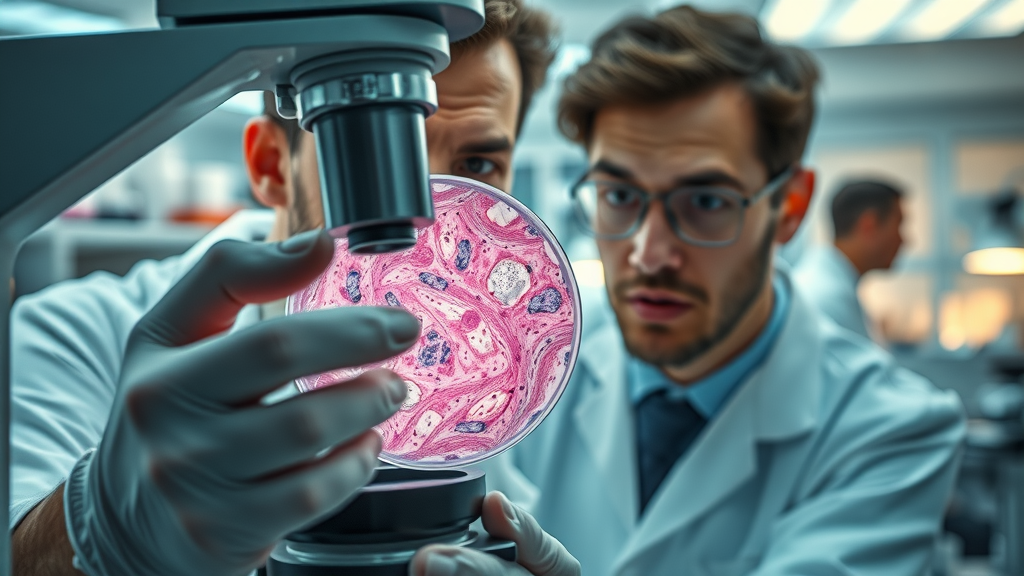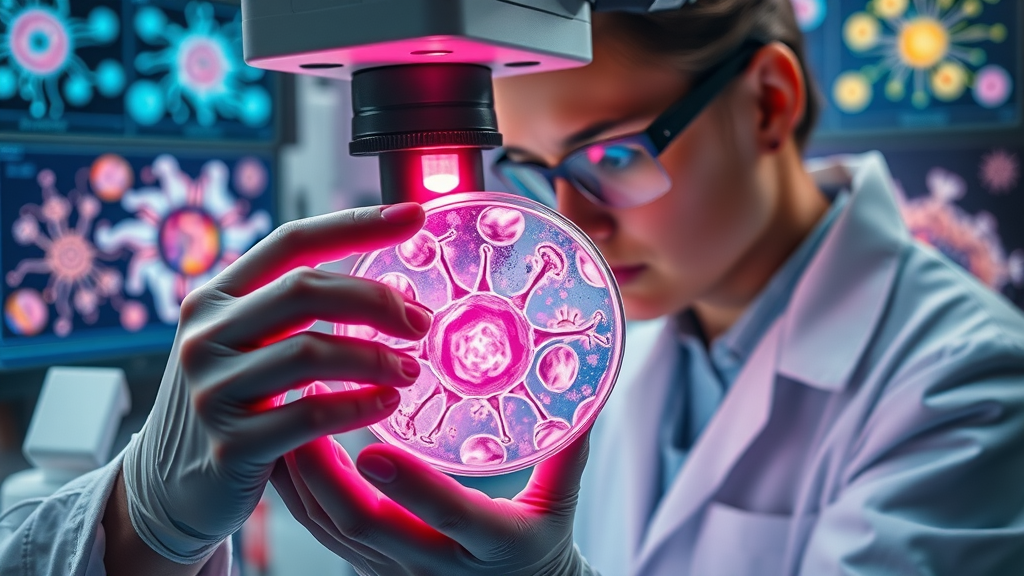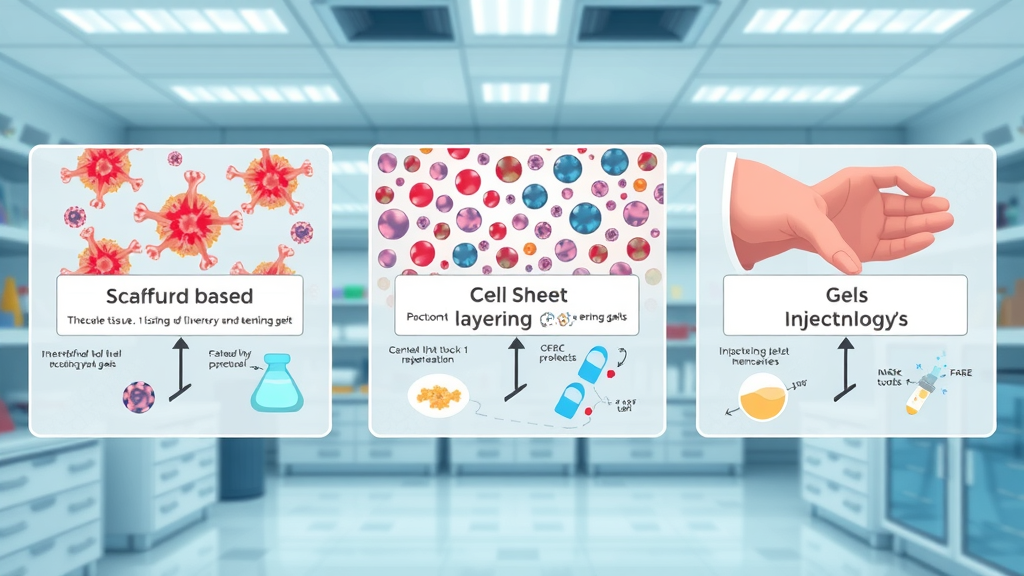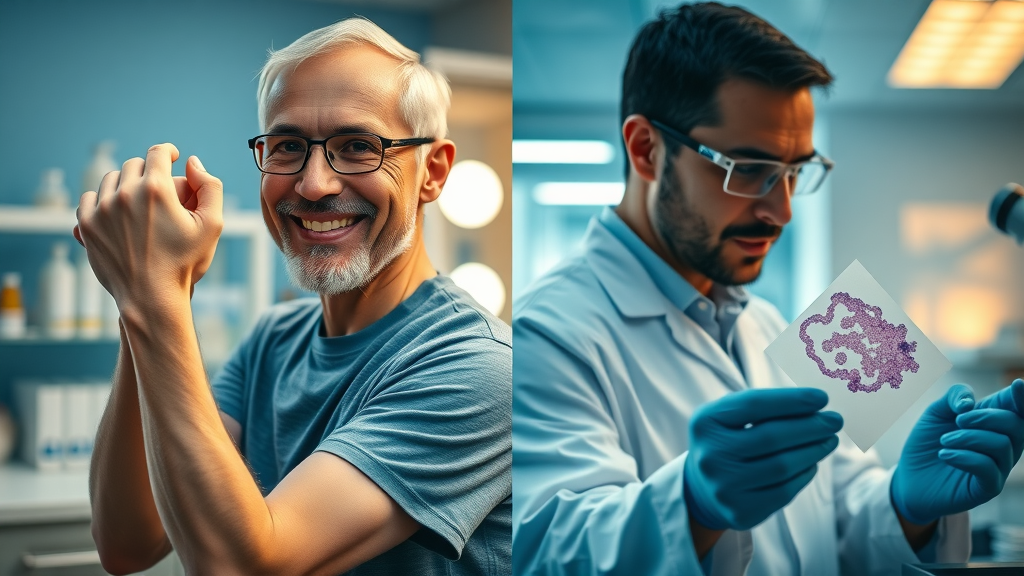Did you know? Each year, millions of patients receive organ or tissue transplants—yet only a fraction of these needs are met, leaving countless lives hanging in the balance. Tissue engineering is changing this reality, making it possible to transform loss into hope and renewal through scientific innovation. If you’ve ever wondered how we might heal ourselves from within, this article reveals how tissue engineering and regenerative medicine are turning science fiction into fact and setting the stage for a medical revolution.
From Loss to Renewal: How Tissue Engineering is Revolutionizing Medicine
Tissue engineering is rewriting the story of recovery in modern medicine. Traditionally, damaged tissue from injury or disease could mean a lifetime of pain, disability, or even loss of life. Now, with advancements in regenerative medicine , tissue repair has taken a leap forward, offering patients real hope for renewal. This evolving field blends biology, engineering, and material science to create living, functional tissues that can repair or replace damaged parts of the human body. Picture a patient recovering from a devastating accident; instead of facing life with a permanent injury, new treatments fashioned by tissue engineers enable an arm or leg to heal as if it were untouched by trauma.
This revolution has broad implications: it not only accelerates human tissue repair but also paves the way for new life-saving therapies. Biomedicine , a discipline fusing advances in cell biology with engineering, is now deploying engineered tissues in transplants and healing previously untreatable wounds. Through practical, real-world examples such as 3D-printed organs, engineered blood vessels , and artificial skin grafts, tissue engineering brings immense shifts in medical engineering and patient care. By merging understanding of stem cells with innovative cell culture methods, researchers are now at the brink of making the once impossible—a complete tissue or even organ regeneration—a routine part of recovery.

Tissue Engineering Accelerates Human Tissue Repair and Recovery
When considering the vast spectrum of injuries and diseases that compromise human tissue , the speed and effectiveness of healing are critical. Tissue engineering bridges this gap by expediting natural tissue repair mechanisms using engineered scaffolds, growth factors, and specialized cell types to reconstruct or substitute lost tissue. Unlike conventional grafts, engineered tissues are custom-designed to match the recipient’s unique anatomical and biological features, significantly reducing the risk of immune rejection and post-surgical complications.
For instance, in wound healing and burn care, lab-grown skin grafts can restore function and appearance far more reliably than legacy treatments. Engineered blood vessels offer hope to patients with cardiovascular diseases, while cartilage regeneration brings relief to those suffering from joint damage. The rapid progress of this field means shorter recovery times, fewer hospitalizations, and a return to a more normal life for those affected by traumatic injuries or degenerative diseases.
Regenerative Medicine: The Cornerstone of Modern Biomedical Engineering
At the heart of this transformation is regenerative medicine , which operates on the principle of healing not just by fixing broken parts, but by guiding the body to renew itself. This discipline synthesizes knowledge from cell biology , engineering, and clinical care to create innovative therapies. Biomaterials , sophisticated cell cultures , and smart scaffolds work in tandem to produce functional tissues that restore compromised organs and body systems.
Biomedical engineering drives this field further, enabling the synthesis and integration of complex living tissue with technological devices. Patients awaiting organ transplants, particularly those with rare tissue types, may soon benefit from bioengineered tissues grown specifically for them. The fusion of engineering and regenerative medicine delivers a future where long transplant waiting lists are a thing of the past, and every patient receives a new lease on life.
- Key Points You'll Discover
- The science and applications of tissue engineering
- The impact of regenerative medicine on tissue repair
- Innovations in biomedical and medical engineering
- Stem cell research and its significance in tissue regeneration
- Types and techniques of tissue engineering
The Science of Tissue Engineering and Regenerative Medicine
The backbone of tissue engineering and regenerative medicine lies in a deep understanding of human tissue biology and the mechanisms through which the body naturally repairs itself. Scientists meticulously study how tissues heal, then amplify or mimic those processes using biological materials and engineering techniques. Their goal: create tissues and organs with the structural and functional properties of native tissue, allowing seamless integration within the human body. With cutting-edge advances in the field, visionaries are not only restoring what’s lost but also improving how these tissues perform beyond their natural limits.
This science incorporates extracellular matrix design, acellular matrix technology, and manipulation of growth factors to foster cell proliferation and functional tissue regeneration. Major focus also rests on cell culture and cell biology , enabling precise control over the types, behaviors, and interactions of the cells involved in tissue rebuilding. Mastery of these complex biological principles puts tissue engineers at the vanguard of both theoretical discovery and clinical application.
How Tissue Engineering Rebuilds Functional Tissue
At its core, tissue engineering works by creating frameworks (scaffolds) from biological or synthetic materials. These structures imitate the body's natural extracellular matrix —the supportive network that cells use to anchor themselves and communicate. Cells—often derived from a patient’s own body, such as adult or pluripotent stem cells —are seeded onto these scaffolds. With the right environmental cues, they proliferate, differentiate into specialized cell types , and form functional tissue that behaves like native tissue within the human body .
This process is highly intricate. The engineered environment must provide not just structural support, but also biochemical signals, oxygen, and nutrients to guide tissue regeneration . Advanced cell culture methods, growth factors such as VEGF and FGF, and dynamic bioreactors together create ideal conditions for tissue growth. Whether the target is wound healing or the fabrication of a full organ, the ultimate aim is functional integration—where engineered tissue restores, replaces, or even surpasses what was lost.

The Critical Role of Extracellular Matrix and Acellular Matrix
Two foundational elements— extracellular matrix (ECM) and acellular matrix —provide the structural and biochemical basis for engineered tissue. The ECM is a complex mesh of proteins and carbohydrates secreted by cells, offering both support and informational cues that guide cell behavior. In tissue engineering , synthetic or natural ECM-based scaffolds create a favorable microenvironment for cell attachment, migration, and growth, making them indispensable for successful integration of functional tissue .
Alternatively, acellular matrix approaches take advantage of donor tissues that have been stripped of living cells—leaving behind a natural “blueprint” for the recipient's cells to repopulate. This strategy is especially advantageous in applications like heart valve replacements and nerve grafts, where the matrix’s natural mechanical properties are crucial. “Tissue engineering offers hope where medicine once reached its limits—by blending biology with innovation, we can write new stories of recovery.”
| Approach | Principle | Key Applications |
|---|---|---|
| Scaffold-based | Uses extracellular matrices as templates | Skin, cartilage |
| Cell-seeded scaffolds | Combines cell culture & scaffold materials | Blood vessels, bone |
| Acellular matrix implants | Relies on host cell migration | Heart valves, nerves |
Role of Tissue Engineers in Regenerative Medicine
Tissue engineers act as visionary architects at the intersection of biology, medicine, and engineering. Their unique skills allow them to transform abstract scientific knowledge into tangible breakthroughs that restore or replace human tissue . In rapidly evolving clinical settings, these experts collaborate with clinicians, biologists, and material scientists to bring engineering and regenerative solutions from lab to bedside. Their work is not just about invention—it’s about building bridges from patient suffering to medical hope.
By meticulously designing, testing, and refining functional tissue implants, tissue engineers commit themselves to delivering the highest standards of safety, efficacy, and durability for patients. Their contributions go beyond surgery rooms, influencing the fields of medical engineering , pharmaceutical sciences, and even public health—transforming expectations for what recovery looks like in the 21st century.
What Does a Tissue Engineer Do?
The daily life of a tissue engineer is an intricate blend of research, design, and patient-centered problem solving. These professionals investigate the properties of different cell types and biomaterials to determine the optimal formulas for tissue growth and integration. Whether working on stem cell manipulations, creating blood vessels through 3D printing, or troubleshooting the challenges of immune system compatibility, tissue engineers must rely on a strong foundation in cell biology and biomedical engineering .
Their roles require flexible thinking, a deep understanding of bioethics, and the ability to work across various aspects of medical engineering —from laboratory bench to operating room. “The role of the tissue engineer is both art and science—crafting solutions at the cellular level to restore life where injury or disease once prevailed.” Through multidisciplinary collaboration, they drive progress that reshapes the future of healthcare.

How Biomedical Engineering Bridges the Gap to Healing
Biomedical engineering acts as the crucial bridge between laboratory discovery and bedside recovery. Applying principles from physics, materials science, and biology, biomedical engineers design devices, scaffolds, and supportive technologies that make tissue regeneration feasible on a practical, human scale. This includes the development of bioreactors for cell culture , custom drug delivery systems, and imaging technologies for monitoring tissue integration.
By creating sophisticated tools and methods for manipulating cells and tissue architecture, biomedical engineers empower tissue engineering teams to pioneer therapies that reach beyond what was previously imaginable in medicine. Their forward-looking approach ensures that innovation is not only possible, but safe, accessible, and tailored to the needs of patients and healthcare providers alike.
Stem Cells and Beyond: The Driving Force of Tissue Engineering
No discussion of tissue engineering is complete without exploring the transformative power of stem cell research. Stem cells are prized for their ability to differentiate into virtually any cell type in the body, making them invaluable for tissue regeneration and repair. As scientists unlock new ways to grow, manipulate, and deploy these cells, the range of treatable diseases and injuries expands exponentially. From wound healing to organ fabrication, stem cells are recognized as the engines driving the next chapter of regenerative medicine .
Emerging cell culture and gene editing techniques are also enabling the creation of "designer cells"—fully tailored to the patient’s genetic makeup and immunological profile. This precise personalization dramatically increases the likelihood of successful tissue integration, reduces complications, and enhances long-term outcomes for patients needing advanced medical care.
Understanding Stem Cells in Tissue Regeneration
Stem cells possess the remarkable power to become any specialized cell type required for tissue repair —from heart muscle cells to neurons. In the context of tissue engineering , both embryonic and pluripotent stem cells can be guided with growth factors and precise cell culture environments to form functional tissue for transplantation. The unique ability of stem cells to self-renew ensures an ongoing supply of raw materials for continuous tissue maintenance and recovery.
As research deepens, the potential for using patient-derived stem cells (induced pluripotent stem cells—iPSCs) becomes especially promising. These iPSCs can be harvested from a patient’s own body, genetically reprogrammed, and transformed into virtually any tissue needed, minimizing the immune rejection that sometimes plagues allogeneic grafts. This approach is already being used experimentally to grow sheets of heart muscle, replenish lost cartilage, and even develop retinal tissues for vision restoration.

Cell Culture Innovations Redefining Medical Engineering
Cutting-edge advances in cell culture —the process of growing cells outside their natural environment—have transformed medical engineering and propelled tissue engineering toward clinical reality. Laboratory environments now allow precise control over cell growth, differentiation, and communication, enabling the fabrication of engineered tissues and organs reminiscent of native tissues. Temperature, nutrient delivery, and mechanical stimulation can be fine-tuned to replicate the conditions inside the human body.
These innovations go hand in hand with novel drug delivery systems that support tissue healing and minimize rejection. For instance, biodegradable hydrogel matrices steadily release growth factors that encourage new cell formation, while microfluidic devices keep cells supplied with nutrients in large-scale tissue constructs. Together, these bioengineering feats are rapidly expanding the scope and efficacy of regenerative medicine .
- Breakthroughs in Tissue Engineering and Regenerative Medicine
- Advanced stem cell therapies
- Novel drug delivery systems
- Bioengineered blood vessels and organs
Types, Techniques, and Goals of Tissue Engineering
The field of tissue engineering is defined by diversity—in its techniques, materials, and goals. From reconstructing skin to developing entire organs , the toolkit available to modern scientists and clinicians is both vast and continually expanding. Central to all strategies is the aim of restoring lost function by building tissues that match their native counterparts in both biology and performance.
With advances in scaffold engineering , cell layering, and the use of injectable gels, multiple pathways now exist to meet the personalized needs of each patient. No single method can address every challenge; thus, ongoing innovation remains essential to tailor treatments for burn victims, heart disease patients, and individuals with rare genetic tissue conditions.

What are the Three Types of Tissue Engineering?
There are three primary types of tissue engineering that researchers employ to achieve effective tissue reconstruction:
- Scaffold-based engineering: Cells are seeded onto three-dimensional scaffolds that provide support and structure, guiding the growth of new, functional tissue . This technique is used especially for bones and cartilage.
- Cell sheet technology: Tissue is formed by layering thin sheets of cultured cells, useful for delicate repairs such as corneal (eye) regeneration and heart muscle restoration.
- Injectable gels: Cells are suspended in biocompatible hydrogels and delivered directly to the injury site—ideal for scenarios like cardiac patches or nerve repair, where the gel provides both matrix and cellular support.
Each approach offers tailored strengths and is chosen based on the tissue type, degree of damage, and patient needs.
Drug Delivery and Functional Tissue Regeneration
Drug delivery innovations are among the most critical enablers of successful tissue regeneration . By integrating growth factors, anti-inflammatory drugs, and antibiotics within scaffolds or hydrogels, tissue engineers can create microenvironments conducive to healing while shielding the regenerating tissue from rejection or infection. Controlled release mechanisms ensure that these biologically active molecules are delivered at the right time and dosage, vastly improving patient outcomes.
This convergence of medical engineering with pharmaceutical technology marks a paradigm shift in regenerative care, making engineered tissues more robust, resilient, and ready for clinical challenges. Today’s bioengineered constructs not only heal but actively participate in complex biological processes, from immune modulation to vascularization, pushing the boundaries of functional tissue regeneration.
| Type | Description | Example Application |
|---|---|---|
| Scaffold-based | Cell-seeding on 3D scaffolds | Bone replacements |
| Cell sheet technology | Layering cultured tissue sheets | Corneal repair |
| Injectable gels | Cell delivery via hydrogels | Cardiac patches |
Education, Careers, and the Future of Tissue Engineering
The rise of tissue engineering has created a host of new educational and career opportunities for the next generation of innovators. Aspiring professionals can explore roles in academia, hospitals, biotech companies, or even start-ups at the bleeding edge of regenerative therapies. Yet, thriving in this multidisciplinary landscape requires not just passion, but rigorous and focused preparation rooted in both engineering and the life sciences .
Students and early-career scientists now benefit from specialized university courses, hands-on laboratory experience, and cross-disciplinary mentorship that readies them to tackle complex challenges in biomedical and medical engineering . As tissue engineering matures, the demand for trained professionals only grows—fueling a dynamic job market brimming with promise and purpose.

How Do You Become a Tissue Engineer?
The pathway to a career in tissue engineering begins with a solid educational foundation in biomedical engineering , medical engineering , or a related life science. Undergraduate study should focus on cell biology, materials science, and core engineering principles. Graduate programs—often at the master’s or doctoral level—offer advanced, hands-on training in topics such as stem cell manipulation, scaffold design, and regenerative medicine .
Experience in laboratory settings, such as internships in cell culture or biomaterials research, is invaluable. Aspiring tissue engineers should also seek opportunities for collaboration with clinicians and exposure to clinical research trials in tissue engineering. Active engagement in conferences, publishing research papers, and staying current on field advancements paves the way for an impactful and rewarding career.
What Degree Do You Need for Tissue Engineering?
Entry-level positions in tissue engineering generally require, at minimum, a bachelor’s degree in biomedical engineering , medical engineering , or a closely related science. However, most professionals pursuing research, clinical, or leadership roles advance their education with a master’s degree or PhD. Universities now offer tailored programs in tissue engineering and regenerative medicine , including electives in biomaterials, stem cell biology, and pharmaceutical engineering.
It’s also common for tissue engineers to cross-train in other specialties such as chemistry, materials science, or computer modeling, as the industry values multidiscipline expertise. This rigorous academic journey ensures that individuals entering the field are uniquely equipped to solve tomorrow’s regenerative health challenges.

Career Pathways in Biomedical and Medical Engineering
Careers in tissue engineering span a spectrum of fulfilling roles. These include clinical research associates, biomaterials scientists, medical device engineers, tissue manufacturing specialists, and regulatory affairs experts. The interplay between biomedical engineering and medical engineering means professionals can also contribute to fields such as gene therapy, prosthetics, and diagnostic imaging—making them integral to the future of healthcare.
With increasing public and private investment in regenerative medicine , career prospects are bright for those who combine technical expertise with curiosity and a dedication to patient well-being. Continuous learning and adaptation are essential in this fast-changing environment.
- Steps to Enter the Field of Tissue Engineering
- Obtain a degree in biomedical or medical engineering
- Gain research experience in cell culture or stem cell labs
- Pursue specialized training in regenerative medicine
- Stay updated with advancements in tissue engineering and regenerative medicine
Opportunities and Challenges in Tissue Repair and Human Tissue Replacement
Tissue engineering stands at a unique crossroads: it has already delivered proven solutions that restore form and function, yet also faces formidable barriers before its full potential is realized. Success stories abound—in burn care, vascular repair, and wound healing —with regenerated human tissue restoring life where hope once faltered. Simultaneously, the field grapples with scaling up organ production, regulating complex therapies, and navigating ethical questions tied to the use of stem cells and gene editing tools.
Alongside achievements, ongoing hurdles such as immune response, vascularization of large tissue constructs , and the manufacturing of solid organs continue to challenge scientists. Yet, with interdisciplinary collaboration and sustained innovation, breakthroughs are certain to accelerate in the years ahead.

Achievements and Ongoing Hurdles in Tissue Engineering and Regenerative Medicine
Cumulative effort across academia, hospitals, and industry has established tissue engineering as a bedrock of regenerative medicine . Innovations in scaffold design , cell culture , and drug delivery have already transformed the clinical landscape—enabling complex surgeries and reducing reliance on scarce organ donations. Yet, hurdles such as cost, regulation, and immune rejection must be tackled. Researchers continue to seek reliable solutions for producing thick, vascularized tissues and replicating the subtle mechanical properties of native organs.
Ethical considerations around the sourcing of stem cells and personalized genetic information keep the field under public scrutiny. Nevertheless, the collective drive for lifesaving innovation ensures that obstacles are opportunities for discovery, not deterrents.
Envisioning the Next Generation of Tissue Engineering
The horizon for tissue engineering and regenerative medicine is bursting with bold promise. Artificial organs printed on demand, personalized cancer therapies, and fully functional limbs for amputees may soon move from the fringes of possibility into standard medical care. The fusion of artificial intelligence with biology is accelerating discovery, while collaborative, global research environments speed the transition from clinical trial to patient treatment.
Future tissue engineers will operate at the cutting-edge of medical innovation—making the impossible probable and transforming the definition of human health itself.

- Advantages and Challenges in Tissue Engineering
- Restores function in damaged tissues
- Reduces reliance on organ transplants
- Current barriers: immune rejection, large organ fabrication, ethical issues
Frequently Asked Questions About Tissue Engineering

What does a tissue engineer do?
A tissue engineer designs, develops, and applies engineering principles to create functional human tissue for medical repairs and treatments, collaborating across cell biology, materials science, and regenerative medicine.
What are the three types of tissue engineering?
The main types are scaffold-based engineering, cell sheet technology, and injectable gels, each offering unique pathways to regenerate or replace damaged tissues.
How do you become a tissue engineer?
Pursue undergraduate and graduate education in biomedical or medical engineering, focus your research on tissue engineering or regenerative medicine, and seek practical experience in laboratory settings.
What degree do you need for tissue engineering?
At minimum, a bachelor’s in biomedical engineering or related field is necessary; most tissue engineers hold advanced degrees in biomedical or medical engineering.
Key Takeaways: Innovating Human Health Through Tissue Engineering
- Tissue engineering is reshaping the future of regenerative medicine
- Advances in stem cell research, cell culture, and engineering solutions are accelerating healing
- Education and training in biomedical and medical engineering is essential for new professionals in the field
"As tissue engineering evolves, the promise of turning damage into new life becomes reality—not just a hope, but a standard of care."
Ready to Experience the Future of Regenerative Medicine?
Reach out to request your complimentary health screening. Call us now at 2816988698
Tissue engineering is a rapidly evolving field that combines biology, engineering, and material science to develop functional tissues capable of repairing or replacing damaged human body parts. This interdisciplinary approach has led to significant advancements in regenerative medicine, offering new hope for patients with various injuries and diseases.
One notable example is the work of bioengineer Linda Griffith, who has developed the first uterine organoid to study endometriosis—a condition affecting up to 10% of women worldwide. This innovation allows researchers to better understand the disease and test potential treatments more effectively. ( time.com )
Another groundbreaking achievement is the successful transplantation of a 3D-printed ear made from human cells into a patient with microtia, a congenital ear deformity. This procedure marks a significant advancement in tissue engineering, demonstrating the potential for creating living tissue implants tailored to individual patients. ( axios.com )
These developments underscore the transformative potential of tissue engineering in modern medicine, paving the way for personalized treatments and improved patient outcomes.
 Add Row
Add Row  Add Element
Add Element 



Write A Comment